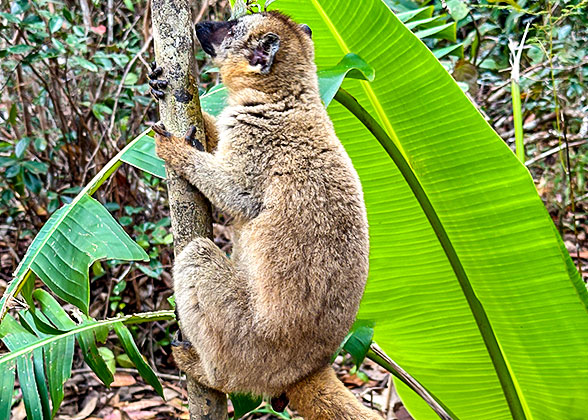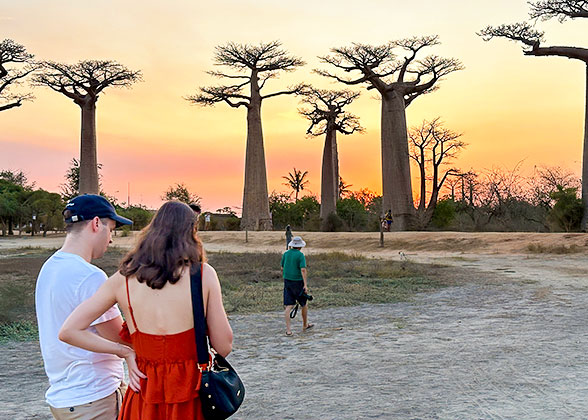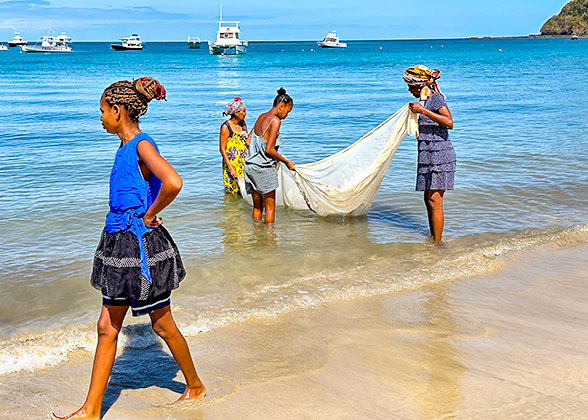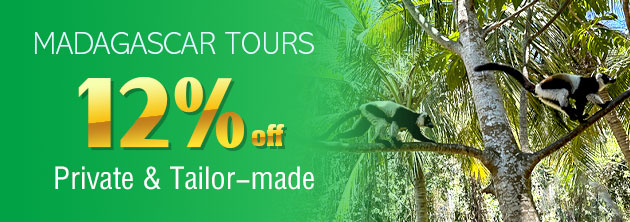Andasibe Weather
Average Temperature: 9-28°C (48.2-82.4°F)
Average Rainfall: about 1,600 mm
Warmest Month: January: 17-28°C (62.6-82.4°F)
Coolest Month: July: 9-21°C (48.2-69.8°F)
Rainiest Month: January: 313 mm / 19 rainy days
Driest Month: August: 9 mm / 6 days
The weather of Andasibe is quite humid all year round. Basically, it has two seasons: warmer rainy season and cooler dry season. The rainy season mainly falls between November and March. The weather during this time can be highly unstable. Heavy rain always falls without hint. The dry season is from April to October; however, the air is not very dry thanks to the dense forest. No matter when you come, the daily temperature difference is quite distinct due to the high altitude. At night, sensible temperature in Andasibe can be much lower, so you need to dress more accordingly.
![]() See also: Madagascar Weather
See also: Madagascar Weather
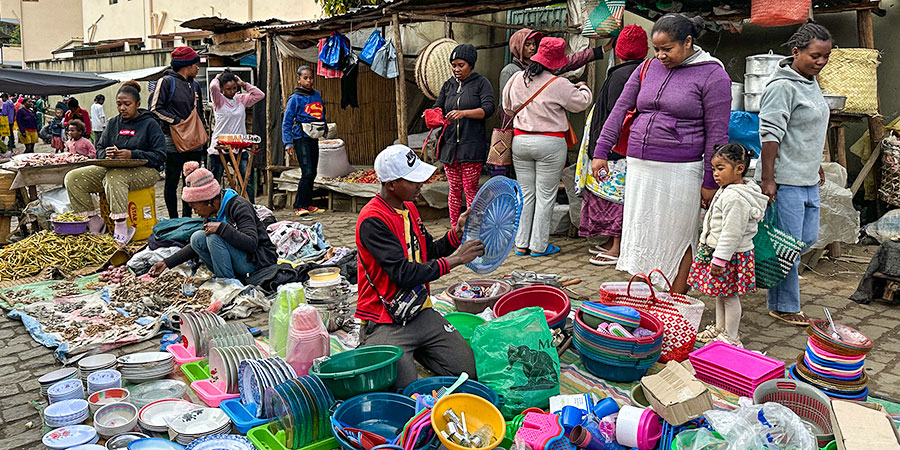
Local Market of Andasibe
|
During this time, rainfall is rather low, making it a good time to explore the vast rainforests in Andasibe and trace wild lives including lemurs living inside. The road condition is relatively good, providing an easy access here. In September and October, you will also have a high chance to meet baby lemurs.
However, July to August, the summer holiday in most northern countries, contribute to the peak season in Andasibe. If you plan to come in the summer vacation of 2025, book your accommodations and planes tickets as early as possible. The neighboring June and September can be a little busier, as well.
![]() See also: How to Get Around Madagascar
See also: How to Get Around Madagascar
 Other things to Pack:
Other things to Pack:1. Enough sunscreen cream is vital for your trip. And if possible, take a cap with you.
2. Bring anti-mosquito repellent cream and mentholated balm.
3. A raincoat is another indispensable item that needs to be in your bag. Umbrella is not suggested because it’s not convenient in dense forests.
4. Take long socks because they help absorb your sweat while hiking. You may also need to put your trouser legs into the socks to stay away from insects bites.
5. You may take a small neck fan to stay cool.
Rainy Season: November to March
 Average Temperature: 15 - 28°C (59 - 82.4°F)
Average Temperature: 15 - 28°C (59 - 82.4°F) Average Rainfall: 1,230 mm
Average Rainfall: 1,230 mmThe rainy season in the Andasibe rainforests can be warm and quite wet. The precipitation accounts for majority of the yearly rainfall in Andasibe, so it is not a good decision to visit Andasibe in this time period. But vegetation and animals tend to be more vibrant at this time and the travel cost is much lower.

Lovely Lemurs in Andasibe
|
Dry Season: April to October
 Average Temperature: 9 - 28°C (48.2 - 82.4°F)
Average Temperature: 9 - 28°C (48.2 - 82.4°F) Average Rainfall: 335 mm
Average Rainfall: 335 mm
With much less rainfall, dry season is the best time to trace wild lives in Andasibe. You will also not be stopped by muddy road.
You may feed lemur catta on Lemur Island in the Vakona Reserve, the prototype of King Julien from the cartoon The Penguins of Madagascar. Meanwhile, you may run into chameleons, frogs, snakes, and birds that are particular to Madagascar in Andasibe National Park. An all-night hike in the rainforests is also popular among wildlife enthusiasts. Seeking for baby lemurs in Parc National d’Andasibe-Mantadia in September can be an very interesting activity. The biggest kind of lemur, indri, is also frequently seen here. Last but not least, you may come to Crocodile Valley to see wild Nile crocodiles, and you’ll be impressed by their fierceness and giant size.

People Exploring Andasibe-Mantadia National Park
|


